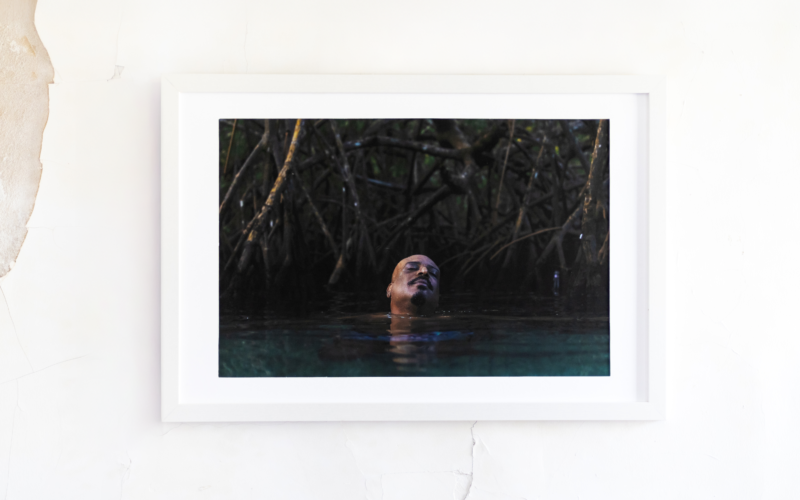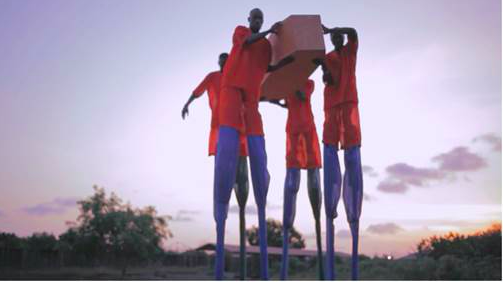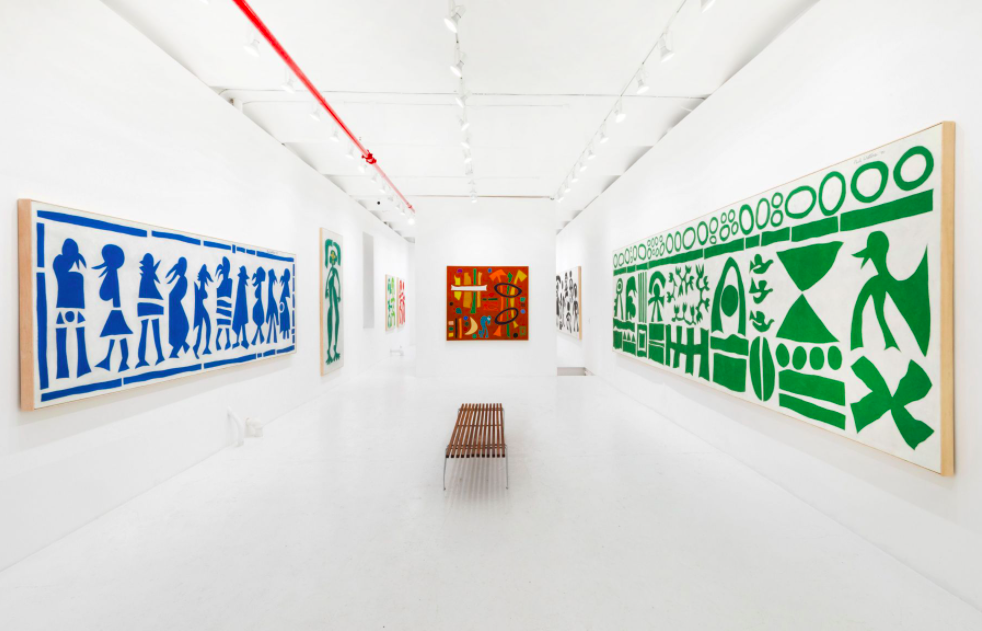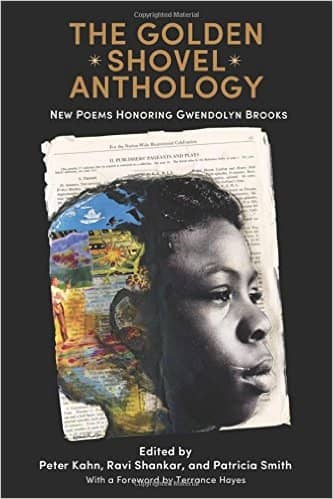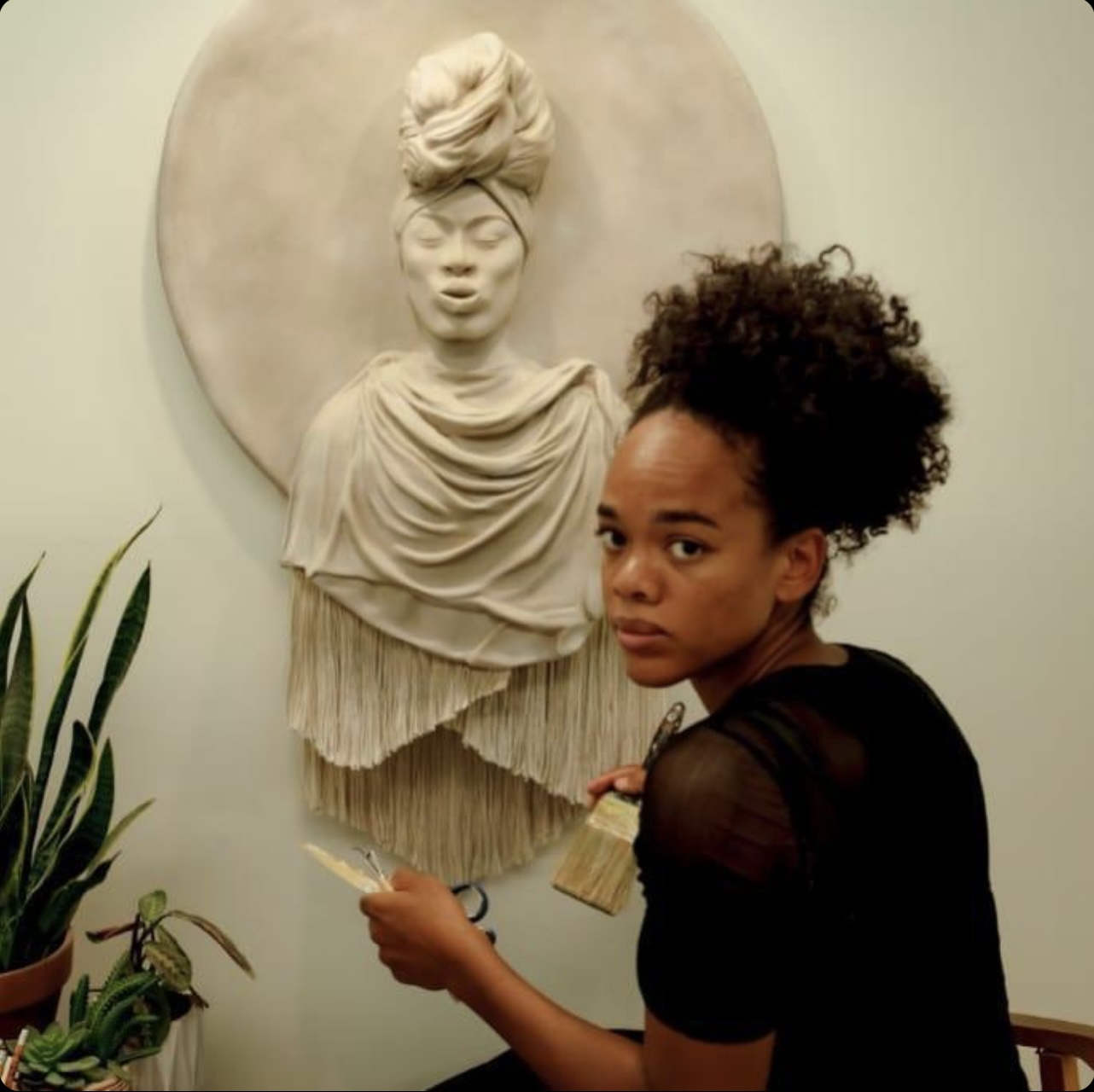Her images show an adaptation to an ancestral language of knowing and experiencing oneself as a part of something greater.
Patricia Encarnación is a New York-based Dominican interdisciplinary artist. Her latest exhibition, Tracing the Underside: The Epigenetics of Tropicalization at Nada House on Governors Island uses portraits to blend environmental imagery and nude, resting Afro-Caribbean people to declare self-determination. Her models express having agency in rest when posing in and near stream-kissed rocks in nature.
“The title, Tracing the Underside, is inspired from a quote by the Caribbean discourse of Edward Les, just one of many mentors for many Afro-Caribbean scholars, academics and researchers,” Encarnación said. “He claims that the landscape is the monument to the Caribbean. Only through our understanding of the landscape can we trace the underside of nature landscapes and rural spaces and understand our history.”
Encarnación’s exhibit on Governors Island, New York will be open until Oct. 27 at NADA House in the island’s Nolan Park. Understanding the land’s history requires acknowledging the indigenous history of the exhibit’s position. Governors Island was once named Paggank, or Nut Island, by the Indigenous Lenni Lenape people, who were forced from their home region—modern New York, New Jersey, Pennsylvania and Delaware—by English religious minorities in the 17th century.
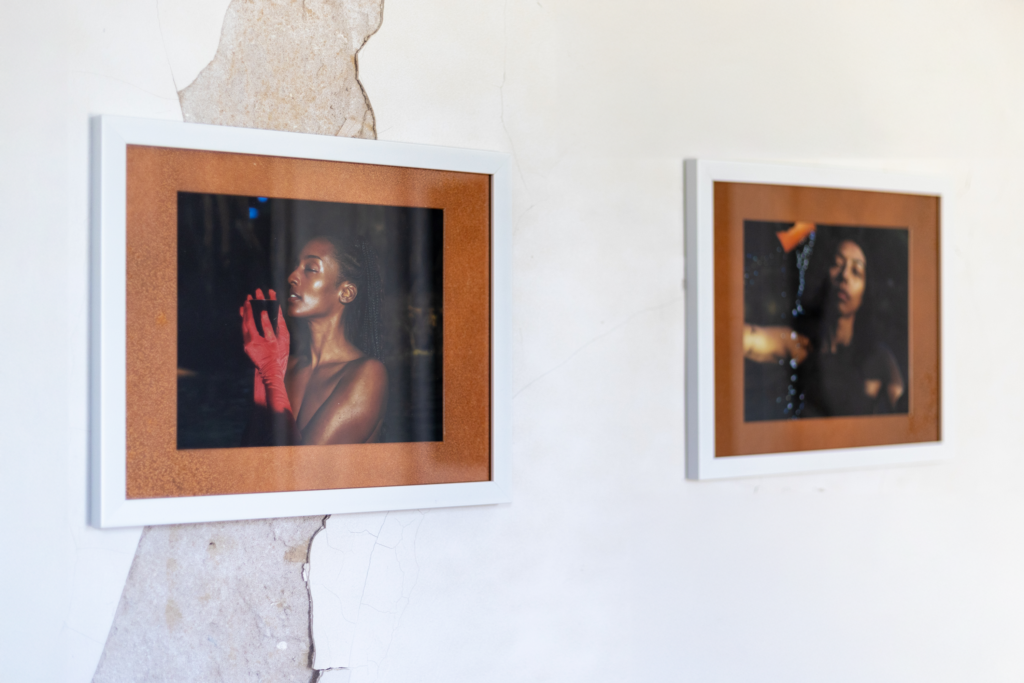
Tracing the Underside starts the process of unlearning generational trauma with stillness. Encarnación’s series uses photo-documentary portraits to highlight the potential for adaptation, resilience and transformation. Sometimes “generational trauma” is a reference to epigenetics—an environment’s impact on how a body reads and responds to itself. Since epigenetics doesn’t change DNA, its effects can be changed. In the same way, how cultures adapt to survive traumatic events and colonial terror doesn’t indefinitely determine their path, because generational trauma can be addressed, reconciled and unlearned.
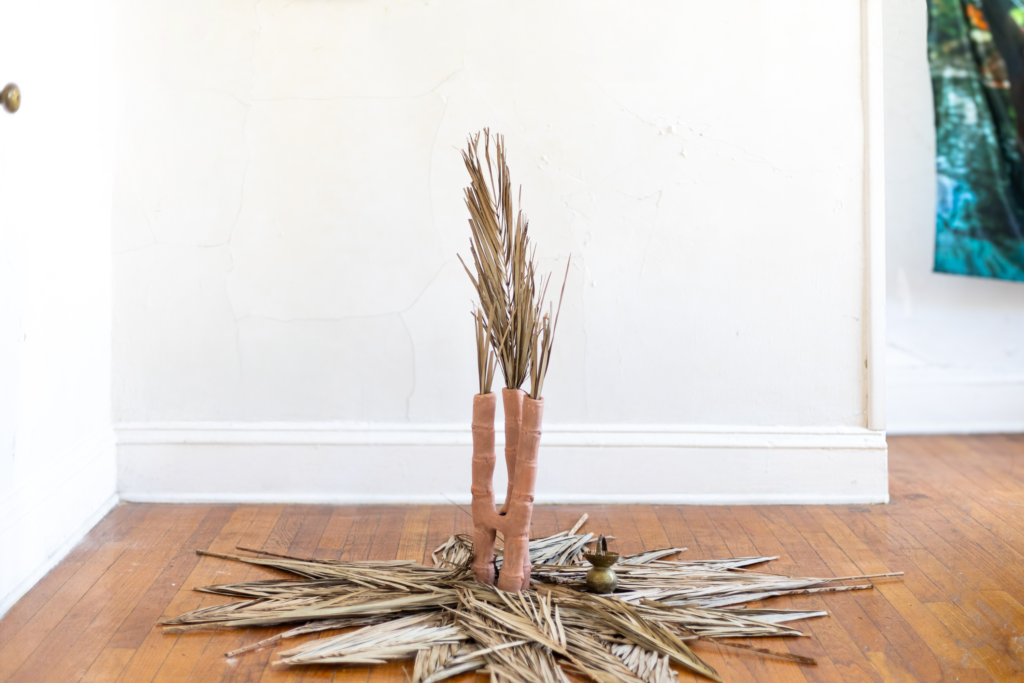
Encarnación is exhibiting this series in collaboration with Superposition Gallery. Superposition is a nomadic gallery founded in Los Angeles by artist and curator Storm Ascher, who champions Afro-diasporic community and multidisciplinary art. Her highlight of different processes, approaches and reflections on Black and Brown art underscores the community and reconciliation at the crux of Encarnación’s works.
“The first time we met at Silver Arts Residency after I walked by her art,” Ascher said, “it was the first time I had seen the digital and natural combined in a really beautiful and sexy way. I’m drawn also to exuding women’s empowerment and being comfortable with your body, even when stuff is really difficult.”
Bodies are elements of nature in Tracing the Underside.” Names and backgrounds are erased in these portraits, which center on bodies in conversation with their environment. Black braids like twisting vines crown copper skins that hold sunlight like deep breaths. Encarnación translates rest among stressless facial expressions and gestures.
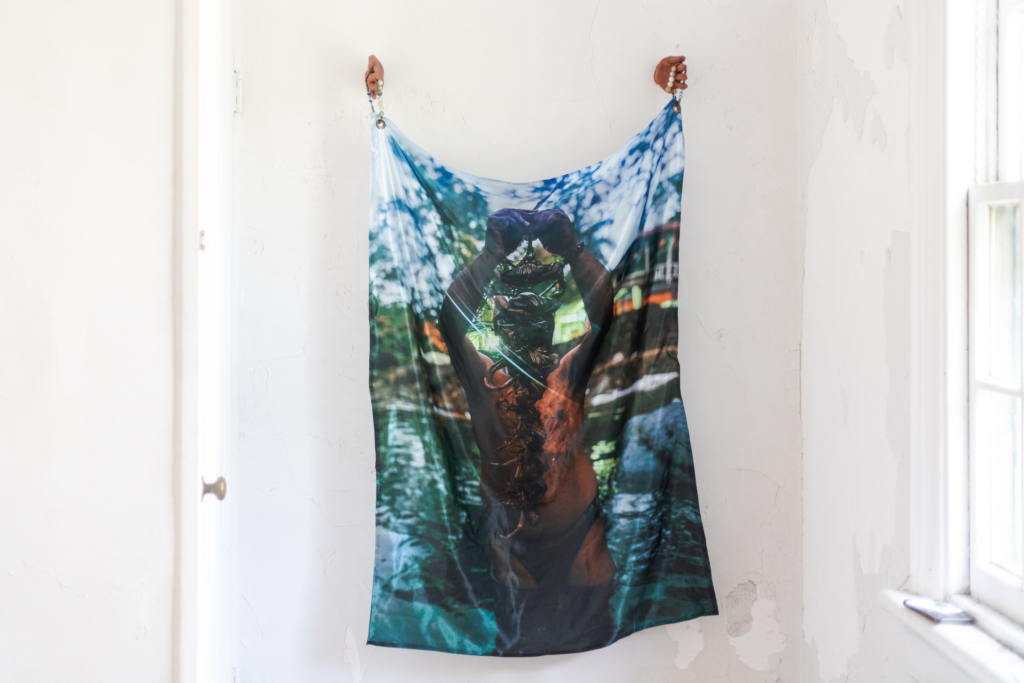
Black and Brown people who are centered in the photos are focused on reconnecting with the environment. Her portraits express the alchemizing power of stillness in nature as opposed to the constant commotion in capitalism. In this way, her images show adapting to an ancestral language of knowing and experiencing oneself as a part of something greater.
“Specifically in the Caribbean, my homeland, you can actually find forms of healing. Just tracing these spaces, you can understand how these were spaces where my communities escaped and were able to find their freedom for the very first times in the processes of colonization,” Encarnación said. “Having a connection, I like to say, an ancestral awareness of our past and a central awareness of our being today, we can find forms to heal ourselves, connect the land and therefore continue healing together with the territory and the land and not continue destroying it.”
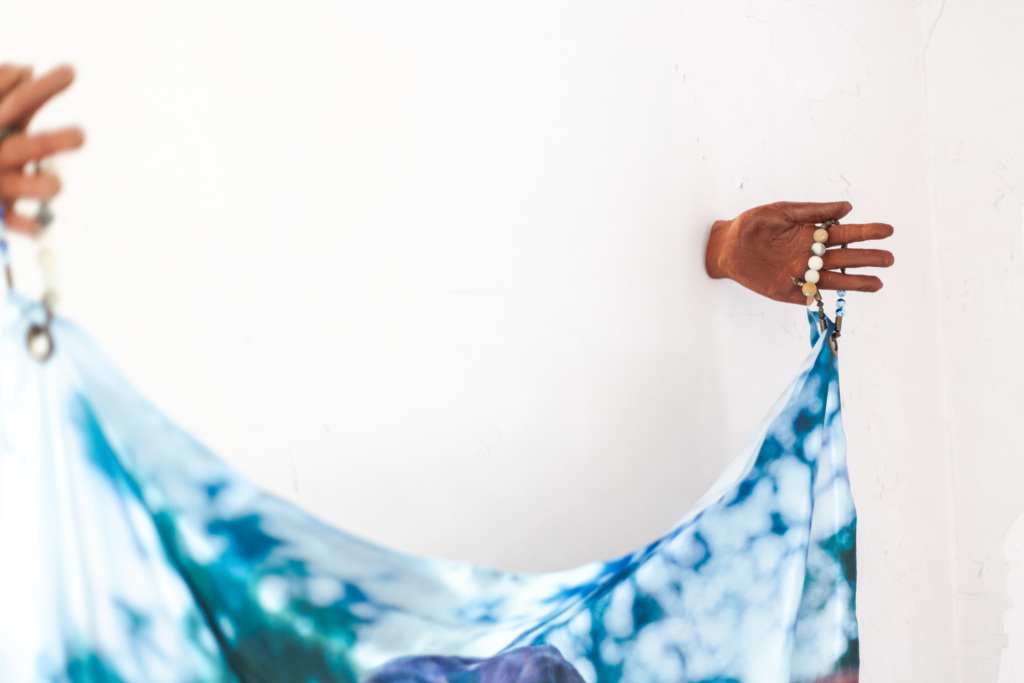
Reestablishing a relationship with land that is itself scarred by colonization demands resilience. Encarnación’s images are a reclamation of what were once poses that people were forced into before being tortured. To the artist, reconciling terror tactics imposed on Afro-diasporic people looks like using those positions to showcase exposure therapy.
Tracing The Underside demonstrates a roadmap for survivors to navigate trauma. Returning to nature—seeing and experiencing it—has a physiological benefit, according to a study in the International Journal of Environmental Research and Public Health. Through her work, Encarnación amplifies a call for decolonization and climate justice as a process of transformation, revealing the profound impact of centuries of colonial land exploitation and neglect of indigenous practices.







